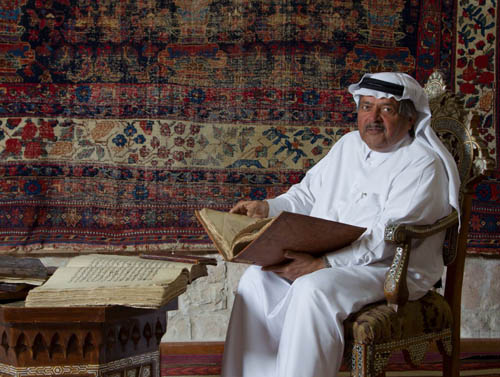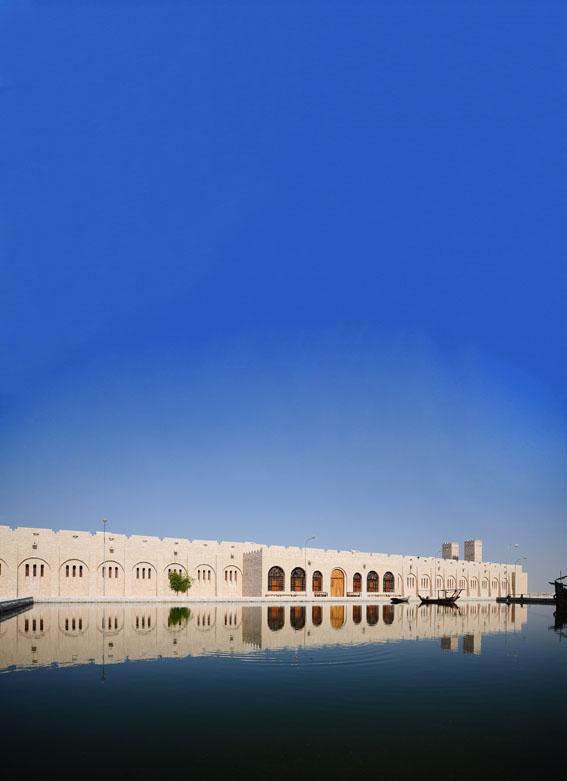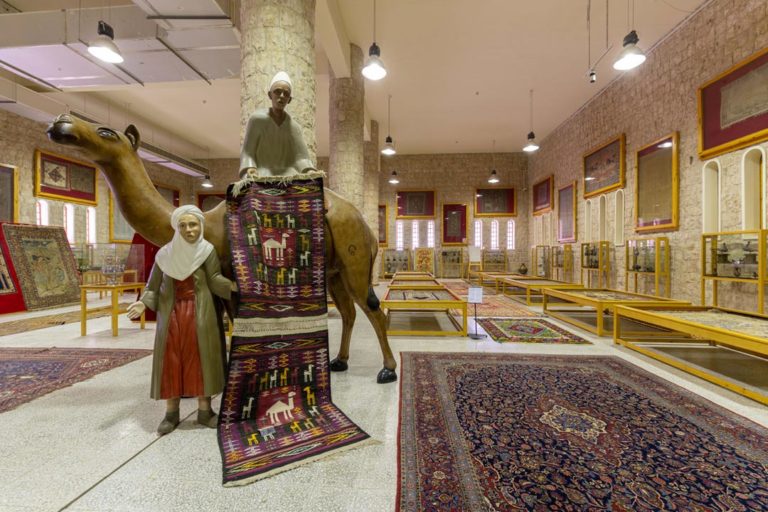Driving through Doha, many futuristic things catch your eye and evoke your imagination.
The downtown skyline, the malls, and the supercars that are all around can easily make you forget about the heritage and beginnings of Qatar and the Gulf region. On the city’s outskirts, on the way to Dukhan, is a museum that is a cultural oasis for the region and country: the Sheikh Faisal Bin Qassim Al Thani (or FBQ) Museum. It is just a 20-minute drive from Doha, but it can make you feel like you have entered another world, leaving the modern Doha you know behind.

A Dream Come True
The museum’s founder is Sheik Faisal Bin Qassim Al Thani, whose desire to collect artefacts and knowledge was cultivated at a young age. He was inspired by visiting museums around the world, and this passion was encouraged by his father. As Sheikh Faisal’s collection continued to grow throughout the years, so did the people’s interest in seeing it. So, in 1998, the museum was built to house his private collection and allow the public to enjoy it. Each piece in there evokes the sense that it is part of a memory for the Sheikh of the places he visited, his interests, and the people he has met.

From Fort to Museum
The museum was constructed in 1998 in a local style with traditional turrets and is a piece of art in itself. As you enter the Al Samriya Estate and approach the museum building, it feels as if you’ve entered a palace. The desert sand gives way to lush greenery and palm trees, and local wildlife can be seen on surrounding private farmland. The museum’s size is humbling, as are the more than 30,000 pieces in it that can’t be seen in just one visit. The halls are vast, with display cases throughout and pieces on the wall, so no space goes unused.
The museum also houses several displays such as the Quran room, the dhows hall, textiles and jewellery, a weaponry hall, an Islamic arts section, and a carpet gallery, to name a few. There is also a house that was moved from Syria and rebuilt brick by brick in the museum, and it is open to visitors.
Other items will give you an idea of what historical life was like in Qatar and how locals would make a living and enjoy their free time between seasons. There is also an area dedicated to hunting where you can see how people in Qatar hunted. Weapons and falcons witness this local tradition that is still alive in the wintertime and continues to be practised as a national sport.
One Thousand and One Cars
One of the biggest attractions is the Sheikh’s private car collection. He currently owns over 500 cars and 300 vehicles. They range from the first cars ever produced to the latest models. Among them are specialised vehicles that were used locally for hunting and some customised vehicles his children used for learning to drive in the desert when they were young. Currently, there are only around 40 vehicles inside the museum halls, and their display changes from time to time. However, the museum is constructing a dedicated car museum that will display all of the vehicles in the collection and demonstrate how transportation has changed in Qatar over the years. The new area will also have the Sheikh’s most collectable pieces and the ones he is fondest of in a special display.
Qatar’s Future Cultural Oasis
The museum continues to look to the future by adding a new extension to house more items and displays once completed. There is even a hotel currently under construction where people will be able to stay, partake in local traditions, and enjoy the calmness of Al Samriya Estate as a cultural oasis.
The museum’s education team also hosts community outreach programmes for children via Zoom to spread knowledge about Qatar heritage and the museum collection through different avenues. FBQ Museum’s educational flagship programme titled “Behind an Object, There is a Story” is available for young participants ages seven to 12 and 13 to 17.

The museum has also rolled out a new interactive family map to encourage children to explore its collection on a self-guided tour with their parents. It also has an app for visitors who want to explore the museum at their convenience, which is available in five different languages.
To visit or learn more about FBQ Museum, check out fbqmuseum.org or send an email to info@fbqmuseum.org.



